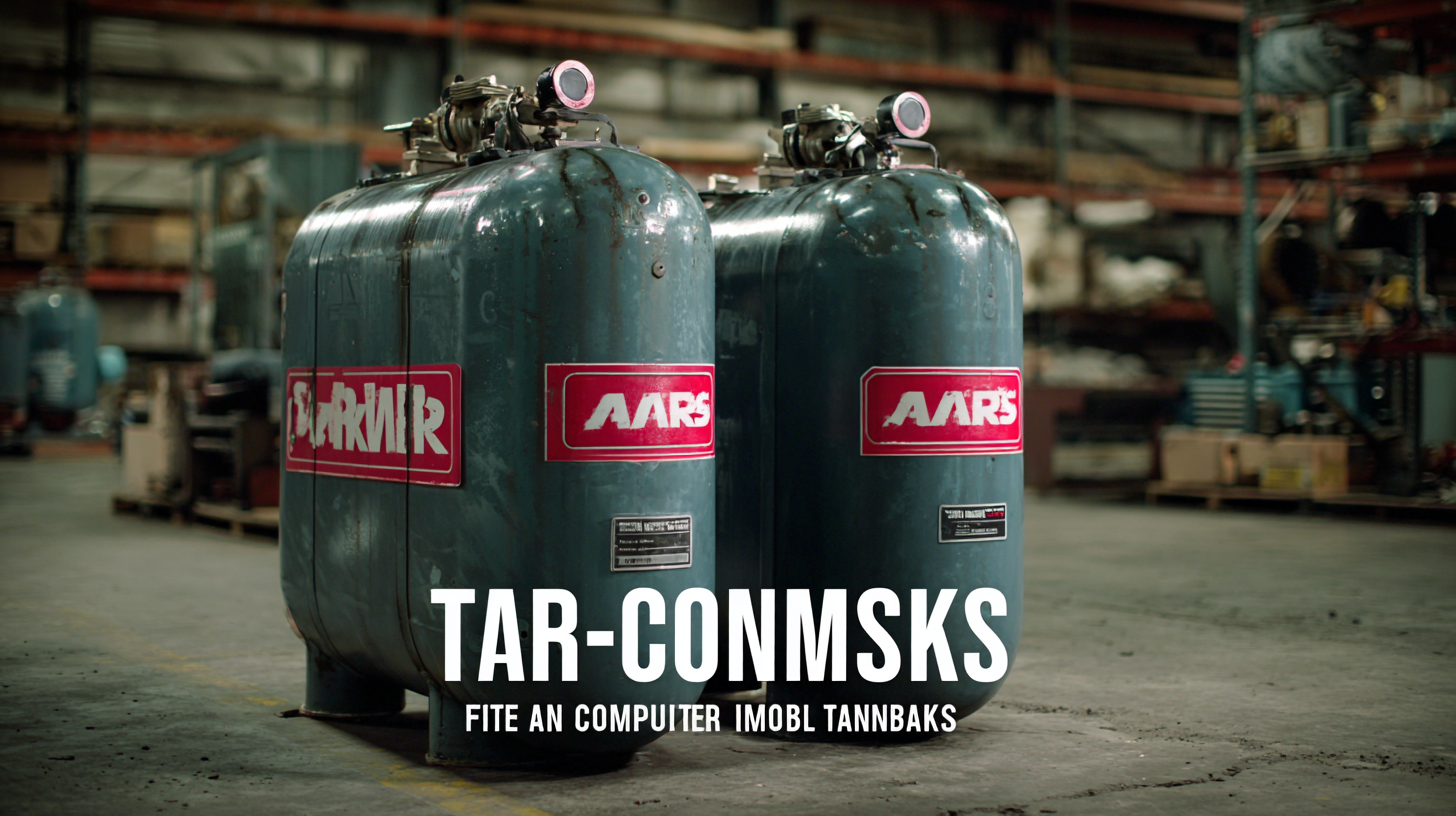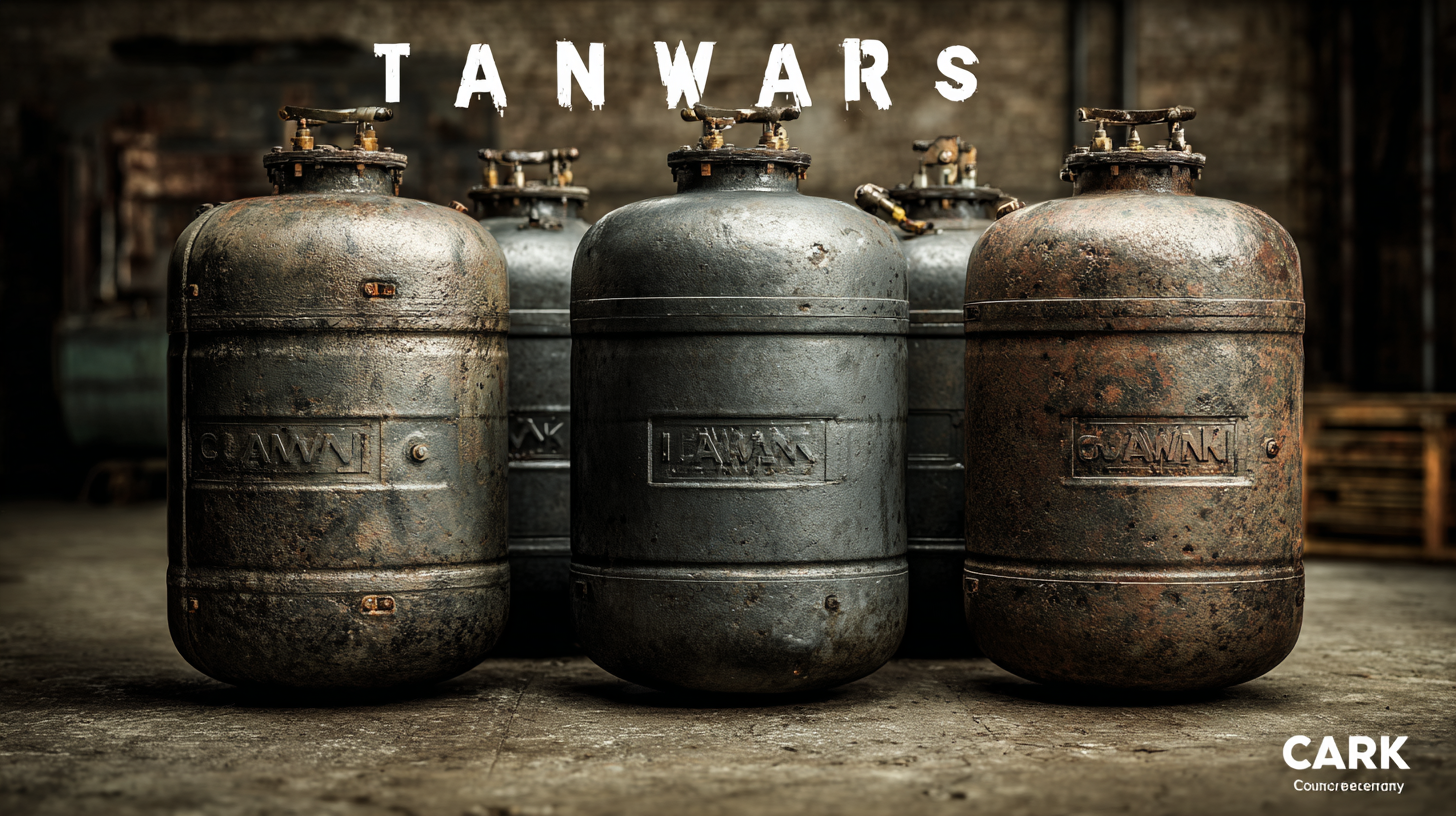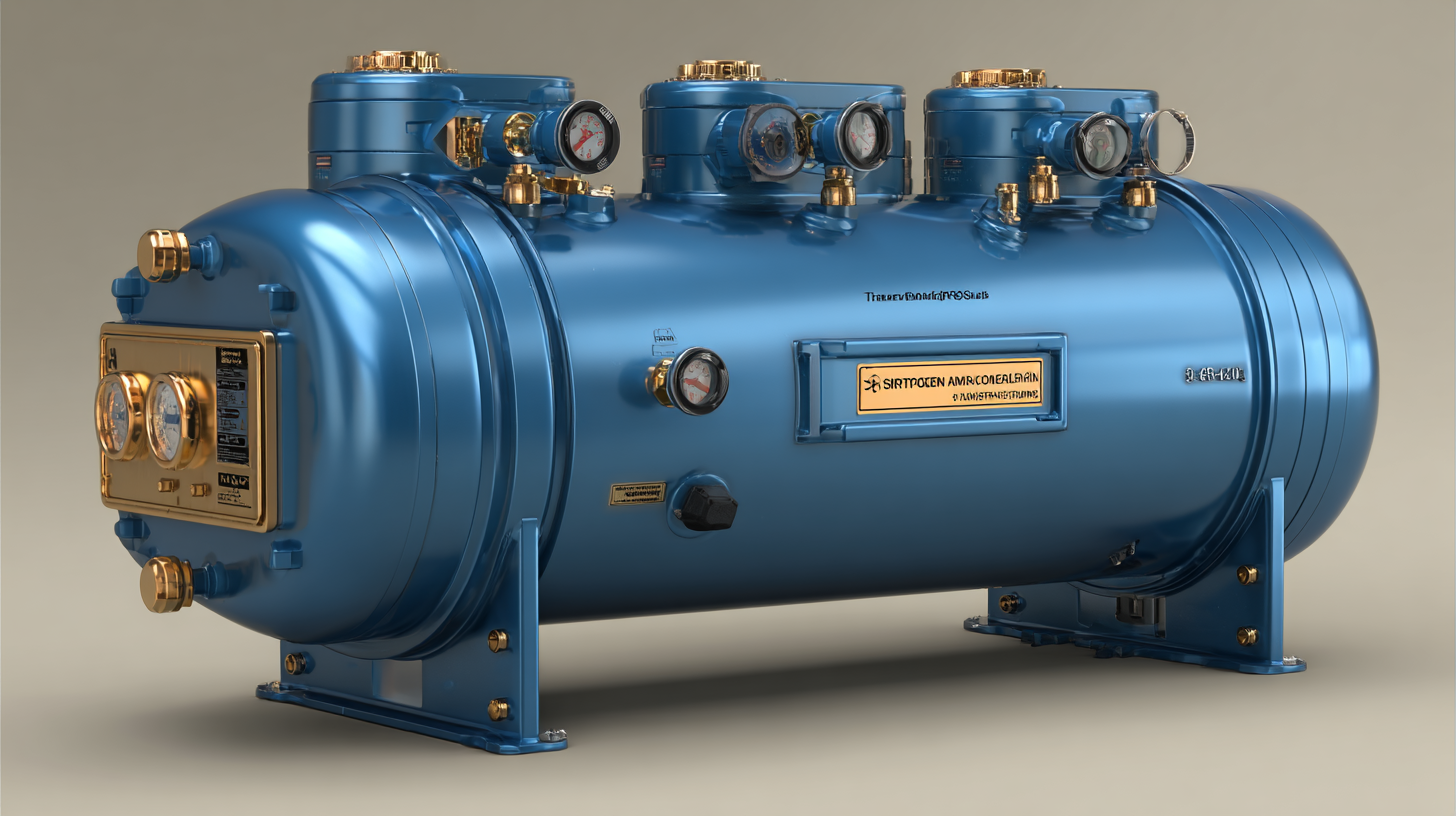The Future of Innovative Air Compressor Tanks for Global Buyers
As global demand for efficient and sustainable energy solutions rises, the air compressor tanks market is poised for innovative advancements. According to a recent report by MarketsandMarkets, the air compressor market is expected to reach USD 40.61 billion by 2025, growing at a CAGR of 4.9%. This growth highlights the increasing reliance on air compression technology across various sectors, including manufacturing, automotive, and construction. Different types of air compressor tanks—such as portable, stationary, and vertical models—offer distinct features tailored to specific applications, thereby enhancing operational efficiency and reducing downtime. As buyers seek to optimize their investments, understanding the unique characteristics and suitability of various air compressor tank types becomes essential for making informed purchasing decisions in a rapidly evolving market landscape.

Innovative Materials: The Next Generation of Air Compressor Tanks
As the demand for more efficient and durable air compressor tanks increases globally, innovative materials are paving the way for the next generation of these essential tools. Traditional steel tanks, though robust, often come with issues such as rust, weight, and corrosion over time. In contrast, new materials such as carbon fiber composites and advanced polymers are being researched and implemented, offering significant advantages in terms of weight reduction and resistance to environmental factors.
Carbon fiber tanks, for instance, not only weigh much less than their steel counterparts, but they also possess greater tensile strength, which enhances safety by reducing the risk of catastrophic failures. Moreover, these materials can withstand extreme temperatures and pressures, making them suitable for a broader range of applications. Additionally, the use of innovative coatings on traditional tanks can enhance their longevity and performance, allowing for more sustainable practices in industries that rely heavily on air compressors.
This shift towards innovative materials is not just about improving performance; it also represents a significant step toward sustainability. As manufacturers begin to focus more on eco-friendly production processes and recyclable materials, air compressor tanks will become a crucial part of resilient supply chains that cater to environmental concerns, ultimately benefiting global buyers seeking both efficiency and sustainability in their operations.
Key Features to Look for in Modern Air Compressor Tanks
When selecting an air compressor tank, the key features to consider can significantly impact efficiency and usability. One of the foremost characteristics is the tank's material. Modern tanks are typically made from durable materials such as aluminum or high-strength steel, which not only reduce overall weight but also enhance corrosion resistance. This longevity ensures that buyers can rely on their tanks for years, minimizing maintenance costs and downtime.
Another crucial aspect is the tank's capacity and pressure rating. Buyers should evaluate their specific needs, as having too large a tank can lead to unnecessary costs, while an undersized tank might not support the required tools efficiently. A higher pressure rating is also advantageous for increased versatility, allowing users to operate a wider range of pneumatic tools effectively. Additionally, look for features such as built-in safety mechanisms and portability options, which can further enhance usability and safety, making modern air compressor tanks not only functional but also user-friendly.
The Future of Innovative Air Compressor Tanks for Global Buyers
This chart illustrates the key features to look for in modern air compressor tanks, highlighting their importance in performance, efficiency, and user satisfaction.
Sustainability in Air Compressor Tank Design: A Growing Trend
As the demand for sustainable practices continues to rise, the design of air compressor tanks is evolving to meet eco-friendly standards. Manufacturers are now focusing on using recyclable materials and energy-efficient production processes, reducing their environmental footprint from the very beginning. This shift not only minimizes waste but also aligns with the global movement towards sustainability, making it a pivotal consideration for buyers.

When selecting an air compressor tank, buyers should consider tanks made from environmentally friendly materials. Look for options like aluminum or high-grade composites that offer durability while being recyclable. Additionally, check for certifications that ensure the product meets sustainability criteria.
Investing in a tank designed with energy efficiency in mind can save costs in the long run. Seek out products that optimize energy usage, which can lead to lower operating costs and reduced greenhouse gas emissions. By being proactive in your choice of air compressor tanks, you can contribute to a more sustainable future while meeting your industrial needs.
Comparative Analysis: Traditional vs. Innovative Air Compressor Tank Solutions
As industries evolve, the demand for more efficient and durable
air compressor tanks has led to a significant shift
from traditional to innovative solutions. Traditional air compressor tanks, typically made from steel, have been the standard due
to their reliability and lower initial costs. However, these tanks often suffer from corrosion and can be heavy,
making them less desirable for modern applications. Their limited lifespan and weight can lead to increased operational costs, prompting businesses to seek alternatives.

Innovative air compressor tank solutions are now at the forefront, incorporating advanced materials such as composite plastics and aluminum, which significantly reduce weight without compromising strength. These modern tanks also boast enhanced resistance to corrosion, ensuring longevity and reduced maintenance expenses. Additionally, innovations such as integrated monitoring systems allow for real-time data tracking, improving safety and performance. As global buyers weigh the pros and cons, the shift towards these innovative solutions highlights the importance of investing in technology that not only meets current operational needs but also aligns with sustainability goals.
Market Trends: Global Buyers’ Preferences in Air Compressor Technologies
The global air compressor market is poised for significant transformation, reflecting evolving buyer preferences and emerging technologies. According to recent market analysis, the automotive air conditioning compressor sector alone is projected to reach a value of $1,013.64 million in 2024, with an expected increase to $1,217.20 million by 2032, translating to a steady growth rate of 2.31%. This trend points to a growing demand for advanced and efficient air compressor solutions in the automotive industry, as manufacturers seek to enhance vehicle performance and energy efficiency.
Similarly, in the realm of air purification, the pet air purifier market is witnessing remarkable expansion. With a market size valued at $150 million in 2022, it is anticipated to soar to $290 million by 2030, showcasing a compound annual growth rate (CAGR) of 8.8% from 2024 to 2030. As pet owners increasingly prioritize the health and well-being of their furry companions, innovative air compressor technologies that facilitate effective air filtration are gaining traction. This convergence of consumer preferences with technological advancements is redefining market dynamics and paving the way for future innovations in air compressor tanks and related products.


